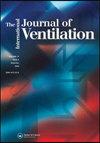Effect of heat loads and furniture on the thermal comfort of an isolated family house under a naturally ventilated environment
IF 1.5
4区 工程技术
Q3 CONSTRUCTION & BUILDING TECHNOLOGY
引用次数: 9
Abstract
Abstract Natural ventilation is the most energy-efficient method by which to passively cool a building, reducing the energy consumption, and improving the thermal comfort and indoor air quality. However, designing buildings using cross-ventilation is far more complicated than mere mechanical design due to the indoor and outdoor parameters in addition to the building configurations. The authors have previously reported that the indoor thermal comfort in an isolated family house is affected significantly by the outdoor conditions; the current study, however, focusses on the impact of heat loads and furniture on the indoor thermal comfort. In this work, The Computational Fluid Dynamics (CFD) approach was employed with a coupled indoor-outdoor simulation. The results showed that the heat dissipated from electrical appliances found in daily life only have a small effect on the thermal comfort indices at both the seated and standing levels because they use only relatively small amounts of energy, whereas these indices are increased remarkably at these two levels when an additional heat source was operated in conjunction with these appliances. In addition, no significant differences between the empty building and the furniture-filled building were observed at the two levels when comparing the air velocity, temperature and thermal comfort indices.自然通风环境下,热负荷和家具对隔离家庭住宅热舒适的影响
摘要自然通风是建筑被动降温最节能的方式,可以降低能耗,提高热舒适性和室内空气质量。然而,由于建筑结构和室内外参数的关系,采用交叉通风的建筑设计要比单纯的机械设计复杂得多。作者以前曾报道过,孤立家庭住宅的室内热舒适受室外条件的显著影响;然而,目前的研究主要集中在热负荷和家具对室内热舒适的影响。在这项工作中,计算流体动力学(CFD)方法被用于室内和室外的耦合模拟。结果表明,日常生活中使用的电器所消耗的能量相对较少,对坐位和站位的热舒适指数影响较小,而在使用这些电器的同时增加一个额外的热源,这些指数在这两个水平上都有显著的提高。此外,空建筑和有家具的建筑在两层的风速、温度和热舒适指标上没有显著差异。
本文章由计算机程序翻译,如有差异,请以英文原文为准。
求助全文
约1分钟内获得全文
求助全文
来源期刊

International Journal of Ventilation
CONSTRUCTION & BUILDING TECHNOLOGY-ENERGY & FUELS
CiteScore
3.50
自引率
6.70%
发文量
7
审稿时长
>12 weeks
期刊介绍:
This is a peer reviewed journal aimed at providing the latest information on research and application.
Topics include:
• New ideas concerned with the development or application of ventilation;
• Validated case studies demonstrating the performance of ventilation strategies;
• Information on needs and solutions for specific building types including: offices, dwellings, schools, hospitals, parking garages, urban buildings and recreational buildings etc;
• Developments in numerical methods;
• Measurement techniques;
• Related issues in which the impact of ventilation plays an important role (e.g. the interaction of ventilation with air quality, health and comfort);
• Energy issues related to ventilation (e.g. low energy systems, ventilation heating and cooling loss);
• Driving forces (weather data, fan performance etc).
 求助内容:
求助内容: 应助结果提醒方式:
应助结果提醒方式:


